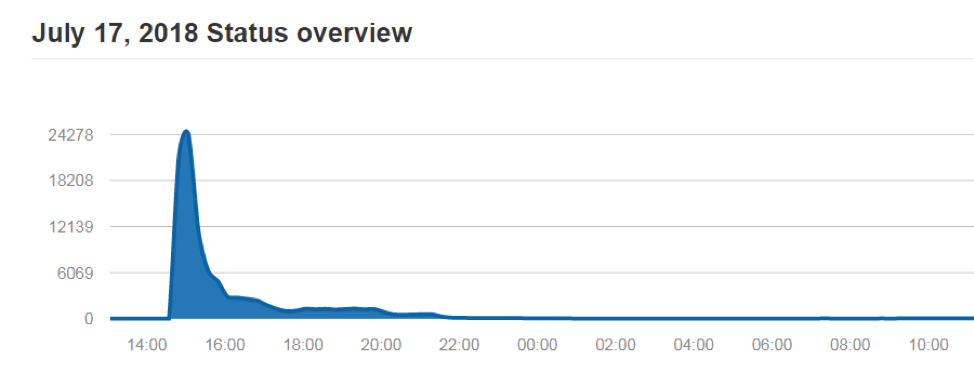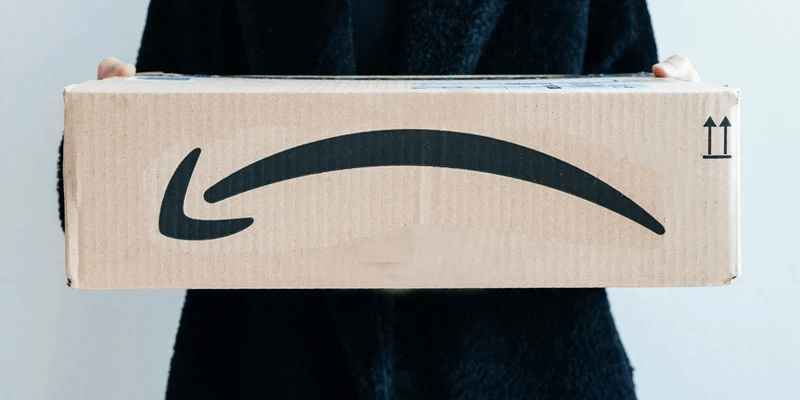Amazon’s heavily-promoted Prime Day event started off with Amazon falling flat on its face right out of the gate. Their site was non-responsive for hours with would-be shoppers getting served pictures of dogs instead of the amazing deals they were promised. Real-time web status service downdetector.com shows an astonishing 24,278 failure reports right after launch.

It seems that Amazon Prime streaming services and Amazon Echo were also impacted with many users unable to access these services even if they weren’t trying to shop. Numerous issues kept happening with the Amazon website as people kept getting caught in inescapable loops, couldn’t check out or had deals disappear on them.
{{cta('84964068-19e2-4d89-917a-16ee107e1363')}}
As expected, the online response was savage, especially on Twitter. Not only were people complaining about not being able to access the much-hyped sale, but a lot of them had nothing nice to say about Amazon. A number of particularly snarky tweets pointed out that Wal-Mart and Target still had working websites with plenty of competing deals. Amazon finally responded with a tweet that many felt was a touch condescending:
All of this is compounded by the irony that one of Amazon’s main moneymakers is it’s Amazon Web Services (AWS) which are supposed to able to provide scalable capacity to deal with just such a traffic surge. None of this looks good on Amazon.
But they don’t care. They don’t need to. They’re already boasting that this Prime Day was a huge success and topped previous records. They have a massive commercial infrastructure (Prime, Echo, Fire TV, Whole Foods, etc.) that keeps people engaged even if they’re not happy with the service. They know their customers will come back and they’re simply too big to be impacted much by all the negative PR.
But are you?
There are lessons to be learned here for everyone else who isn’t one of the biggest three technology companies in the world.
Learning from Amazon's Mistakes
Here are the three biggest lessons I took away from the Prime Day fiasco:
- Be Prepared – Amazon knew what was coming, they knew they’d expanded both the scope and the duration of Prime Day and they knew there was going to be a commensurate increase in users during that specific 36-hour period. They still failed to meet the demand. Why this happened remains to be seen, but smart technology companies will now triple-check their systems before an expected traffic surge. If it can happen to Amazon, it can happen to you too.
- Respond Immediately – and I’m not just talking about fixing the network problems here. It took hours for Amazon to get around to responding to its (justifiably) angry customers. PR should have been running damage control the second they realized there was a problem. Amazon can afford to have a bunch of their customers defect to their competitors for a few days and can absorb a fair amount of ill-will and bad impressions (to say nothing of all that lost revenue). Can you?
- Be Honest – Amazon’s late response was confined to one tweet and it was still pretty self-congratulatory. In effect, they were saying that some people were having trouble but Amazon was still making a ton of money – not the message your angry customers want to see. Where were the acknowledgements of issues on the web site? Where were the apologies for delays? Did anyone ever consider that the cute dogs on their error pages would get irritating after the 50th time they showed up? It’s proven that customers who receive a sincere and honest apology are much more likely to come back even if their issue remains unsolved. It would have cost Amazon nothing to apologize for the glitches and leave the back-patting until later. Instead they left a bad taste in the mouth of their paying customers. Can you afford to do that too?
Amazon can make these mistakes because they’re a giant. Unless you are as well, you should learn from them and do better.
